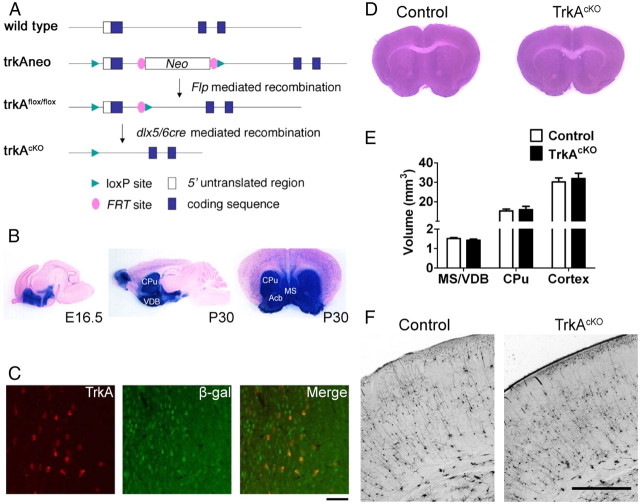Figure 1.
Generation of TrkAcKO mice. A, Targeting strategy for conditional deletion of TrkA in the forebrain. Diagram shows the TrkA locus and targeted alleles. B, Dlx5/6i-cre-mediated activation of Rosa26R (R26R), as identified by the expression of β-galactosidase (β-gal) from the activated R26R allele. The Dlx5/6i-cre mice were crossed with R26R-LacZ reporter mice. Sagittal section from E16.5 embryonic brain showing LacZ staining in the subcortical region. Sagittal and coronal sections of brains at P30 showing all the cells in the forebrain. Acb, Nucleus accumbens; CPu, striatum. C, Double immunostaining of β-galactosidase and TrkA in MS of Dlx5/6i-cre;Rosa26R. Most of the cells are positive for LacZ staining. Only a few cells are positive for TrkA, all of which are also positive for LacZ. D, H&E-stained coronal brain sections from P30 wild-type and mutant mice showing that TrkAcKO brain is normal in size and has no gross histological defects. E, Quantitative evaluation of septal, striatal, and cortical volume of P30 control and TrkAcKO mice. n = 4. F, Golgi impregnation of P30 control and TrkAcKO coronal brain sections revealed no apparent defects in cortical lamination. Scale bars: C, 100 μm; F, 1 mm.

